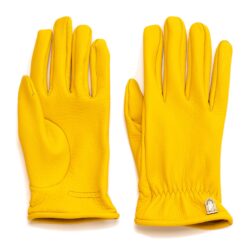Express Deliveries countrywide.
authentic safety gloves

This Authentic safety gloves, also known as protective gloves or work gloves, are specialized hand coverings designed to provide protection and safety to the wearer in various industrial or hazardous work environments. These gloves are crafted with specific materials and features to shield the hands from potential hazards, including cuts, abrasions, impacts, chemicals, heat, and cold.
Quantity:
Continue Shopping
Category: Gloves
Description
Authentic safety gloves, also known as protective gloves or work gloves, are specialized hand coverings designed to provide protection and safety to the wearer in various industrial or hazardous work environments. These gloves are crafted with specific materials and features to shield the hands from potential hazards, including cuts, abrasions, impacts, chemicals, heat, and cold. Here is a description of typical authentic safety gloves:
Material: Safety gloves can be made from a wide range of materials, depending on the specific hazards they are designed to protect against. Common materials include leather, synthetic fibers (such as nylon, polyester, or aramid), natural rubber latex, nitrile, neoprene, PVC, or combinations of these materials.
Cut Resistance: Safety gloves designed for cut protection feature materials with high cut resistance, such as Kevlar, Dyneema, or other specialized fibers. These gloves are specifically engineered to prevent or minimize cuts and lacerations caused by sharp objects or tools.
Abrasion Resistance: Gloves with enhanced abrasion resistance are often used in environments where there is a risk of repetitive rubbing or scraping motions. They are made from durable materials and may feature reinforced areas, such as palm patches or extra layers, to withstand wear and tear.
Impact Protection: Some safety gloves are designed with impact protection in mind. They feature additional padding or cushioning on the back of the hand or fingers to absorb and disperse the impact from tools, machinery, or falling objects.
Chemical Resistance: Safety gloves intended for handling chemicals or hazardous substances are often made from materials that offer resistance to specific chemicals. For example, nitrile gloves provide resistance to a wide range of chemicals, while neoprene gloves are suitable for certain oils and solvents.
Heat and Flame Resistance: Gloves used in high-temperature environments or where there is a risk of contact with flames or hot objects may be heat-resistant. They are typically constructed from materials like leather, aramid fibers, or specialized fire-resistant fabrics to protect against burns.
Comfort and Dexterity: Safety gloves strive to balance protection with comfort and dexterity to ensure that the wearer can perform tasks effectively. Many gloves feature ergonomic designs, flexibility, and a good fit to allow for comfortable hand movements and a secure grip on tools or objects.
Compliance with Safety Standards: Authentic safety gloves should adhere to industry-specific safety standards, such as those set by organizations like the American National Standards Institute (ANSI) or the European Union’s CE certification. Compliance ensures that the gloves meet minimum safety requirements and provide adequate protection for the intended work environment.
Safety gloves are crucial personal protective equipment (PPE) that safeguard the hands and fingers from potential injuries in hazardous work settings. Wearing authentic safety gloves appropriate for the specific task and environment significantly reduces the risk of hand injuries and promotes a safer work environment.



